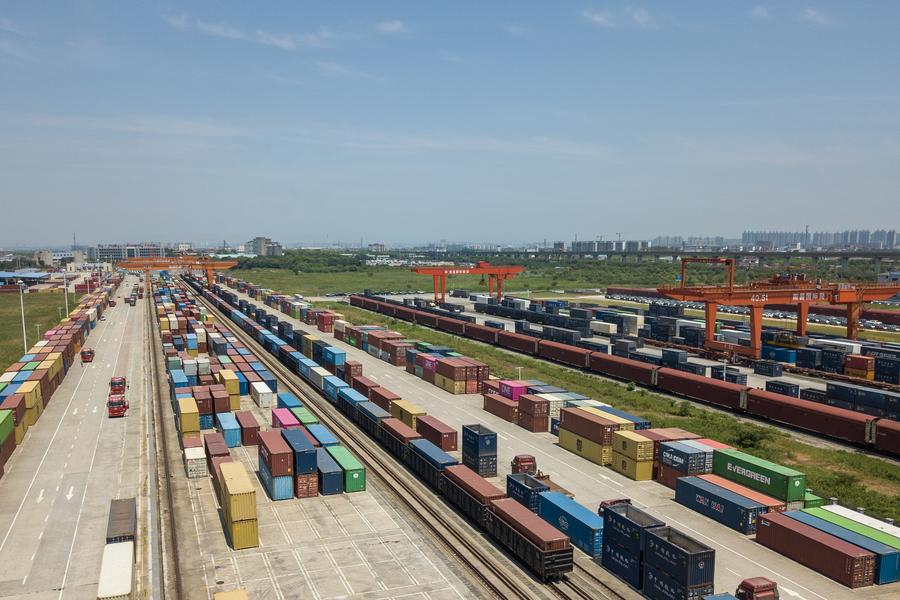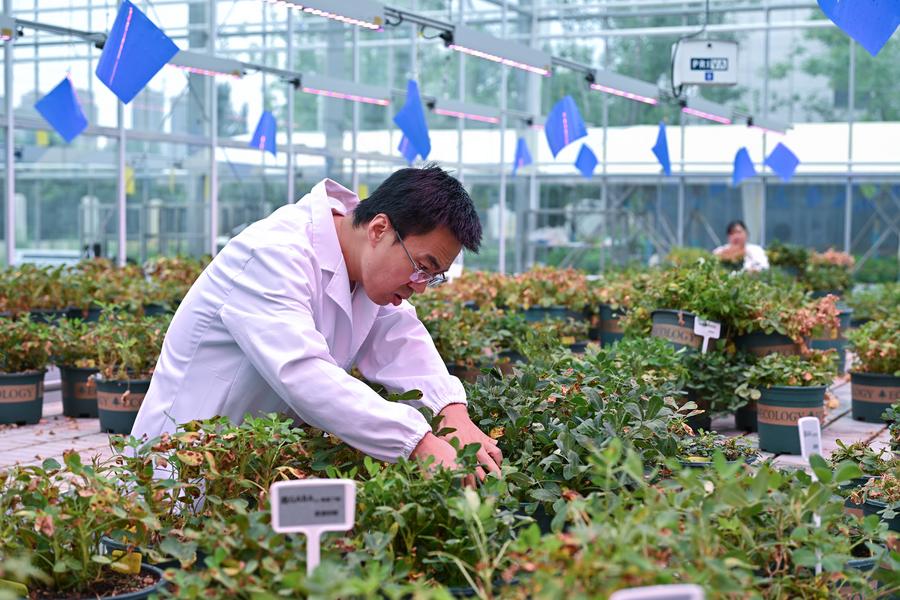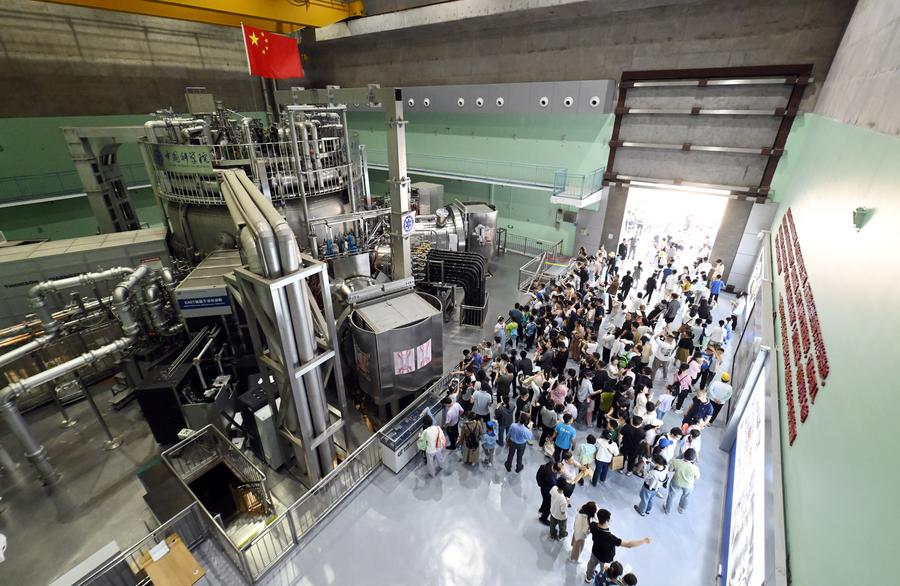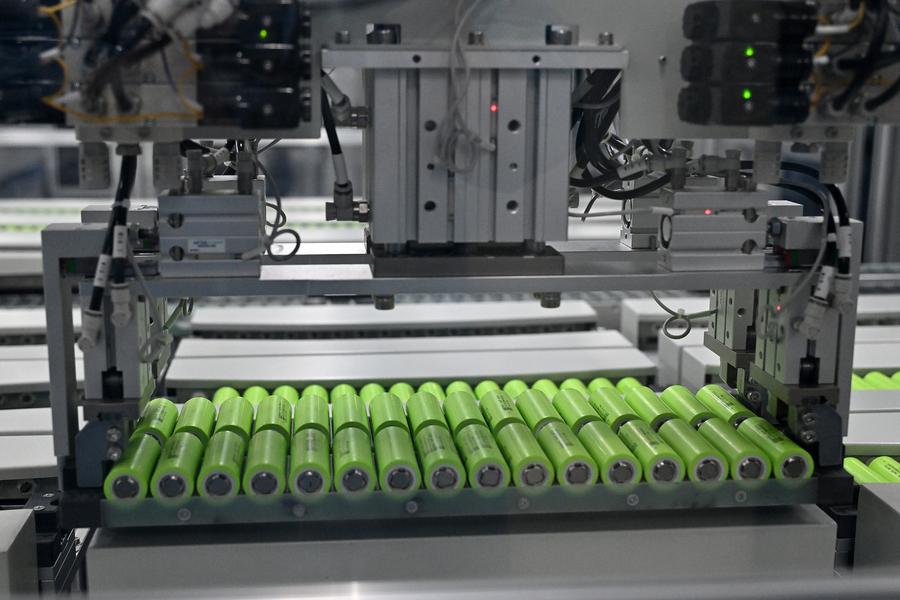
 0 Comment(s)
0 Comment(s) Print
Print E-mail Xinhua, August 3, 2024
E-mail Xinhua, August 3, 2024Inside a 300-seat restaurant in Xiaogang Village in Anhui Province, Yan Jinchang, over 80 years old, gives informal lectures to guests about the momentous events that took place 46 years ago.
In 1978, 18 farmers in the village took risks in secretly signing an agreement to contract collective land to individual households. Yan was one of the signatories.
Over the next few years, the household contract responsibility system that derived from Xiaogang's experiment spread nationwide, fueling farmers' enthusiasm for agricultural production. For this reason, the village was dubbed "the cradle of China's rural reform."
The 20th Communist Party of China Central Committee held its third plenary session last month, with the adoption of a resolution on further deepening reform comprehensively to advance Chinese modernization.
The reforming spirit of the pioneers in Xiaogang has been inherited and carried forward across China in the face of various challenges, and now plays a pivotal role in further energizing the country's central regions in the new era. While its origins are in agriculture, the broader implications of this emphasis on reform can be seen in other areas, including finance, business, trade, innovation and green technology, with a wealth of success stories on offer.

Yan Jinchang shows a drum at his village homestay in Xiaogang Village of Fengyang County, east China's Anhui Province, July 25, 2024. [Photo/Xinhua]
Reform for a robust economy
Chengya Trading, a company dealing in spectacles in Nanchang, capital city of east China's Jiangxi Province, once encountered financing difficulties due to a lack of funds, said the company's head Yi Xuewen.
However, the problem was solved later thanks to Nanchang's administrative reform. The staff of the city's Xihu District, where the company is located, visited the company and helped secure over 3 million yuan (420,309 U.S. dollars) of government-guaranteed loans with a lower interest rate.
"This injected vitality into the development of the company, and our business is getting better," Yi said.
This intervention is an example of local efforts to optimize the business environment and support the private economy. In the first half of 2024, district authorities of Xihu implemented policy loans of 65.2 million yuan, and as of July this year, they had solved 97.6 percent of the problems of more than 7,670 business entities.
A major land port for international trade in Nanchang is bustling with rail freight. The customs authorities have implemented reform measures for faster declaration and clearance, further opening up the domestic market and connecting it to the world.

An aerial drone photo taken on July 22, 2024 shows the railway port of Nanchang International Land Port in east China's Jiangxi Province. [Photo/Xinhua]
As of 2024, the port has launched 23 international freight-train routes, connecting Nanchang with over 50 countries and regions. Some 56 logistics companies from all over the country such as JD.com, Cainiao and Sinotrans have started businesses at the port.
The city of Zhuzhou in Hunan Province has also gained vigorous momentum through reform. By establishing a modern enterprise system, the state-owned CRRC Zhuzhou Locomotive Co., Ltd. has exported rail-transit products, including new-energy locomotives and dual-energy subway engineering maintenance cars, to 52 countries and regions.
Innovation for better growth
Efforts will be made to improve the institutions and mechanisms for fostering new quality productive forces in line with local conditions, according to the resolution.
Innovation is at the core of new quality productive forces, and institutions and enterprises in China's central regions often stress the notion that "without innovation, we will fall behind."

Shi Lei, a researcher from Central-China Agricultural Valley, checks peanuts growth in a phenotyping and speed breeding greenhouse in central China's Henan Province, July 29, 2024. [Photo/Xinhua]
The Central-China Agricultural Valley is an agricultural innovation platform developed by Henan, China's major wheat-producing province, accounting for a quarter of the national output.
The agricultural valley covers a planned area of 1,612 square km and is home to 82 seed enterprises and 58 innovative platforms.
Centered on breeding, it also focuses on the development of smart agriculture and the construction of high-standard farmland. Its digital brain processes information related to weather, soil moisture, soil fertility and crop conditions through various data models, and then sends it to farmers to assist with agricultural production.
On an islet of less than 3 square km in Hefei, Anhui Province, one can find the Hefei Institutes of Physical Science, Chinese Academy of Sciences, which features several impressive devices that employ cutting-edge technologies.
These include the Experimental Advanced Superconducting Tokamak, known as the "Chinese artificial sun," and the Steady High Magnetic Field Facility. A large number of products have been derived from these facilities, such as special power supplies, superconducting magnets, low-temperature refrigeration, proton therapy and innovative drugs.
Deng Guoqing, director of the scientific development department there, said that a special effort has been made to transform scientific and technological achievements by large advanced scientific devices.

Citizens visit the Experimental Advanced Superconducting Tokamak (EAST) at the Institute of Plasma Physics of the Chinese Academy of Sciences (ASIPP) in Hefei, east China's Anhui Province, May 18, 2024. [Photo/Xinhua]
Sustainable development
The third plenum also urged efforts to improve ecological conservation systems and make concerted efforts to cut carbon emissions, reduce pollution, pursue green development and boost economic growth.
Based in Henan, Yutong Group has become the world's biggest bus manufacturer after decades of expansion. Its subsidiary Yutong Bus Co., Ltd. sold over 36,000 vehicles in 2023, up 20.93 percent year on year while the number of exported vehicles soared by 78.87 percent to 10,165.
Aiming at green and sustainable development, the group has never stopped investing in new-energy technologies since 1997, and produced its first electric bus in 1999. So far, over 180,000 electric buses produced by Yutong have been sold around the globe.
The city of Yangquan, Shanxi Province, is covered by green trees, with rows of solar panels and wind blades set up on its undulating ridges, continuously generating and sending clean power to factories and families.

Sodium-ion batteries are pictured on the production line of a company under Huayang New Material Technology Group in north China's Shanxi Province, July 31, 2024. [Photo/Xinhua]
As one of China's largest anthracite-producing areas, the city has abandoned its path of dependence on coal and pursued innovation-driven, eco-friendly development, especially the photovoltaic industry and sodium-ion batteries for new-energy vehicles and emergency lighting.
Among those at the forefront of such efforts is Wang Kechen, head of the research institute of industrial technology under the Huayang New Material Technology Group.
"It is only by pursuing innovation and industrial transformation that we can realize sustainable development in cities like Yangquan," said Wang.